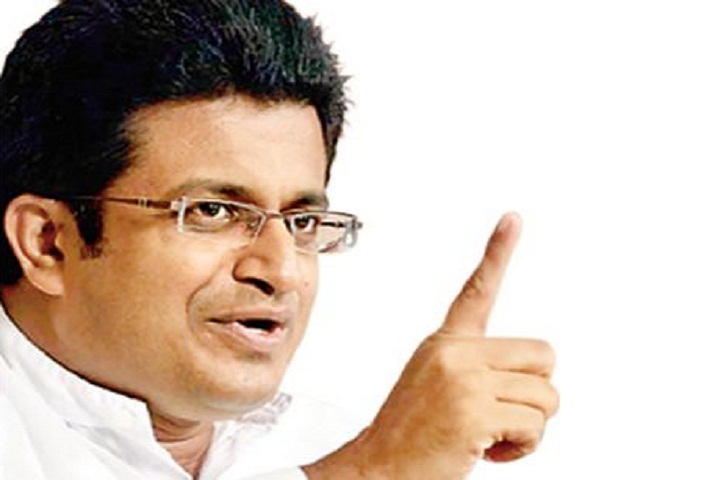Interview with Joy Thomas, new president and CEO of CPA Canada
On April 1, 2016, Joy Thomas will take over as president and CEO of CPA Canada, the world’s fifth-largest accounting body. Joy chats about the job, her expectations, and her plans to take the profession into the future. She also invites you to send in questions.

“I’m hoping that this April 1 isn’t quite as exciting as April 1 three years ago!” says Joy Thomas, who is finishing her three-year stint as CPA Canada’s executive vice-president.
Although CPA Canada was established on Jan. 1, 2013, the assets and obligations of CICA and CMA Canada were rolled into the new organization on April 1, 2013. (CGA-Canada was integrated the following year.) “When you’re doing a merger, lots of issues have to be worked through right up to the wire,” explains Joy.
As Joy prepared to take over from president and CEO Kevin Dancey, we sat down to talk with her about the challenges of her new, high-profile role. The quick-paced discussion touched on topics such as how technology disruption will affect the profession, what Joy does to stay ahead of the info-curve, and why a constructive culture will help drive CPA Canada forward.
JOY THOMAS: LOOKING INTO THE FUTURE
Layers of experience
I worked across several sectors of the economy as a professional accountant in industry. Then I worked as the CEO for two different provincial accounting bodies and then at CMA Canada. Since 2013, I’ve served as executive vice-president at CPA Canada. As a result, I bring a solid understanding of how the profession operates and I understand the issues from the perspective of a member.
A perspective shift
As the executive vice-president of CPA Canada, I was responsible for operations, so I had more of an internal than an external lens. As president and CEO, I’ll be working more with external stakeholders and representing the profession at a national and international level. I face the immediate challenge of ensuring a smooth transition into my new position, and with that will come some restructuring at the management level. I’m already developing my work plan for the next 12-to-18 months.
The future is now
In the last three years, we’ve focused on the integration of three accounting organizations and creating the new profession. Now it’s time for us to move on. Our business plan for fiscal 2017 refers to the shift from transition to transformation. What will CPA Canada look like five years from now? What skills will our members need? We’ll focus on the future.
Culture is at the core
We have an interesting structure to work with in the accounting profession. CPA Canada is the national body, and each of the provincial bodies is a completely separate entity with its own board, management team, and infrastructure. There’s no one decision maker in the profession in Canada. We have to understand the perspectives of multiple stakeholders. To advance the agendas, we all have to be consultative and collaborative.
 Building a collaborative culture has always been a focus of mine. Being adaptive and innovative comes from having a constructive culture. If we want to advance the needs of our members and act in the public interest, we all need to face the same direction. At CPA Canada we’ve been working on our culture journey over the past two years. We’re excited about what more can be achieved.
Building a collaborative culture has always been a focus of mine. Being adaptive and innovative comes from having a constructive culture. If we want to advance the needs of our members and act in the public interest, we all need to face the same direction. At CPA Canada we’ve been working on our culture journey over the past two years. We’re excited about what more can be achieved.
The CPA skill set of the future
Some of the big challenges, which are also huge opportunities, involve understanding what the skill set of a CPA will be in five years. We’re evolving The CPA Competency Map and starting to explore a new competency framework that will address the skills required of a CPA from certification right through the career life cycle.
Several drivers of change have implications for the profession. We have a demographic tsunami coming at us. At the same time, the demand for CPAs has not declined. We want to make sure that we have flexible learning and alternative channels and paths to the designation. We want to attract the best and brightest.
Addressing technology risks
Technology disruption is effectively changing the way organizations work. Data management has become a key issue for CPAs. How do you value information? How do you measure it? How do you make sure that the information you’re getting is reliable? How do you protect it in cyberspace?
One of our initiatives is a new audit data analytics committee comprised of audit practitioners, internal auditors, members of business, and academics. The committee monitors developments in auditor use of data analytics. It’s just one example of how technology use changes the way we do business.
Building business resilience
We’re doing a significant amount of work on climate-change adaptation — how organizations deal with a changing environment and how they adapt when things change. CPAs play a key role in ensuring organizations have dynamic risk management and robust, adaptable business strategies to build resilience to external forces.
Staying on top of information overload
They say, “How do you eat an elephant? One bite at a time.” It’s tough to keep on top of all the information that professionals field every day. I rely on many individuals to get briefed on the various files and I try to read extensively. Because I sit on the IFAC Board of Directors and on theGlobal Accounting Alliance, I tap into a global network that represents 2.6 million accountants and more than 100 member bodies.
 Managing global travel
Managing global travel
I already travel a lot because of my work on international boards and committees. Last fall, I was in Korea chairing a panel on the CFO of the future. I’ve been asked to speak at many accounting events and at women’s leadership conferences. There will likely be more requests, and I’ll have to manage them. We have a very senior, highly skilled management team and they all oversee aspects of this work.
Connecting with members
Recently, I’ve attended several financial literacy events with Cairine Wilson, our vice-president of corporate citizenship. We have more than 11,000 members who volunteer to conduct financial literacy sessions across the country. It’s a great way for me to get to know some of them.
Within CPA Canada, we have 400 employees, but also more than 800 volunteers who sit on advisory committees, task forces, oversight boards, and councils. I connect with some of them daily. Their advice and direction on the profession is critical to our success.
Women and leadership
You go to a cocktail party and someone says, “What do you do?” You say, “I’m a CEO.” And they say, “Oh, really!” It’s a surprise to them, because you’re a woman. I want to get to the day when it’s not a topic.
I worked the whole time when my two kids were young. We know that much of the work, even in dual-income families, tends to fall to the women. Then many women get sandwiched with elder care, etc. It can be very, very tough.
I think it made me a better manager because I’m sensitive to the fact that we’re dealing with personal issues all the time at work. I’m a woman in a senior leadership role, so first off I have a responsibility to mentor and sponsor other women.
But I also have an opportunity as a manager to create policies that acknowledge the challenges of integrating work and life. That’s regardless of gender. I can put policies in place or set the tone at the top to improve the balance between family issues and workload.
















